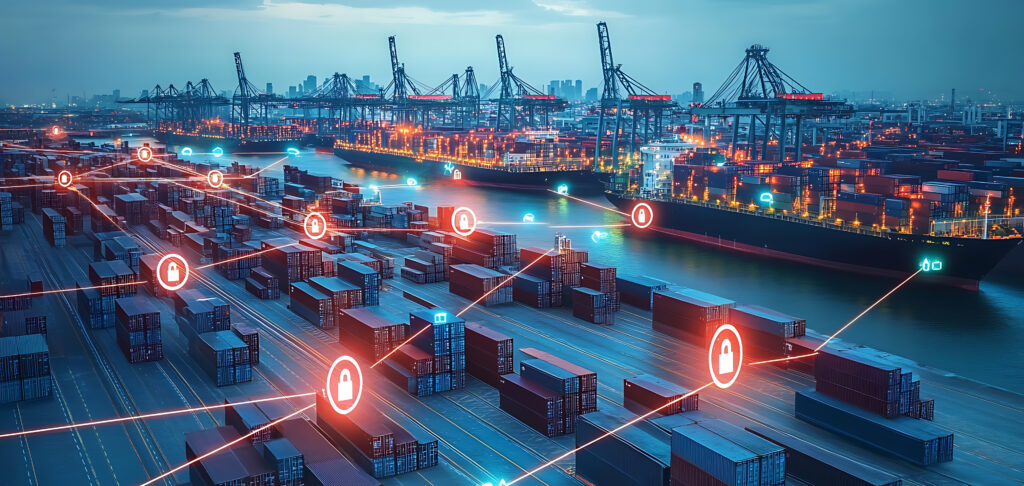It’s hurricane season again, and this one has been pretty devastating so far. From 2013 to 2023, nineteen hurricanes made landfall in the U.S. Many of us are all too familiar with the destruction hurricanes cause, having seen them on the news or, worse, having experienced one in our own lives. It’s difficult to predict the impact of a storm. Beyond the immediate damage, hurricanes can disrupt transportation routes, halt manufacturing, and create prolonged delays in sourcing materials miles and miles from its epicenter. These events leave businesses scrambling to adapt, highlighting the importance of having a resilient supply chain that can withstand the initial impact and recover quickly. Preparing for these disruptions can make the difference between meeting customer expectations and very costly consequences.
Disruption is Unavoidable
Hurricanes may be a known threat, but they are just one of the many threats to your supply chain.
We may not be able to anticipate where the next hurricane will land, but one thing we can count on is that one or more will make landfall in the US next year. In the unlikely event your operations aren’t interrupted by severe weather, something outside your control will disrupt your network. It could be a supplier outage, an extended lead time, geo-political conflict, or your logistics provider getting knocked offline—interruptions are a certainty. What businesses need more than ever in this era of uncertainty are supply chains, flexible enough to adapt to disruption, regardless of its cause.
When things have gone wrong, it is too late to plan
When disaster strikes, it’s too late to start planning. You’re immediately thrown into a reactive mode, forced to handle the fallout with insufficient data, delayed decisions, and a shrinking number of options on the table. Facing delays and grappling with missed opportunities. The key to resilience is not waiting for the disruption but preparing for it. By the time you are dealing with road closures, facility damage, or production delays, it’s too late to ask, “What should we do now?” Your team should already know the answers. Proactive scenario planning, network design, and simulation are critical.
Proactively Modeling Scenarios
While we can’t predict the exact timing of the next natural disaster, labor strike, or transportation bottleneck, we can prepare. It is not a matter of ifa disruption will happen but howyour network will respond when it does.
Supply chain leaders use GAINS to strategically simulate events and assess their operational performance under duress. Allowing them to test and quantify the impact of any closure or disruption across their entire network, providing a go-to strategy to share across the organization, ensuring everyone is prepared when disaster strikes.
One of today’s most powerful tools for supply chain optimization is scenario modeling within a digital twin. Think of a digital twin as a digital duplicate of every node in your supply chain network. This virtual “twin” is a model that behaves exactly like your real-world supply network, giving you a risk-free ‘sandbox’ to simulate disruptions and test different strategies before they happen.
“Wisdom consists of the anticipation of consequences.”
Anticipate challenges and plan how your supply chain will respond under each likely scenario. By running simulations, you are not just seeing theoretical outcomes—they are constructed to accurately predict and understand the impact on your network using your data, your constraints, and real-time conditions. Giving insight into the impact of the scenarios in terms of costs, lead times, service levels, and other KPIs. Maybe you want to see how adjusting your safety stock levels would affect service during a disruption or what the impact would be if you sourced materials from a different supplier. In this digital environment, you can tweak these variables without risking actual disruptions in your live network. This helps companies move from being reactive to proactive.
When fluctuations begin—from the initial impact to the recovery phase—your team will already have mapped out what needs to happen to ensure you can keep your promises to your customers. With GAINS, you can move forward faster. Whether adjusting to post-disaster demand spikes or managing the restoration of services, you can act decisively, keeping your business running smoothly in the face of uncertainty.
A Supply Chain Designed For Disruption
Unpredictability is the only constant. The key to success is adapting to disruption, regardless of its cause—a natural disaster, a sudden shift in market conditions, or a global crisis. GAINS provides the tools to react and proactively prepare for disruptions, equipping businesses with the resilience and flexibility needed to thrive in uncertainty.
Beyond Disaster – Building Long-Term Resilience
Supply Chain leaders can use a platform like GAINS to build resilience into their planning process. By simulating a variety of possible disruptions and planning for different outcomes, organizations can adapt their supply chains to rapidly changing conditions in real-time. As a result, the supply chain network is better equipped to handle the unexpected, ensuring it remains competitive and agile, no matter the challenge.
GAINS enables you to move forward faster and more confidently by integrating critical planning and design elements into a composable solutions platform. When the literal or figurative storm hits, your team will be prepared, your operations will run smoothly, and your promises to your customers will be kept.
Related Resources
Blog: Can We Please Stop Using “New Normal” by Jeff Metersky
GAINS On Podcast Episode 1: The Next Supply Chain Crisis with Jeff Metersky



